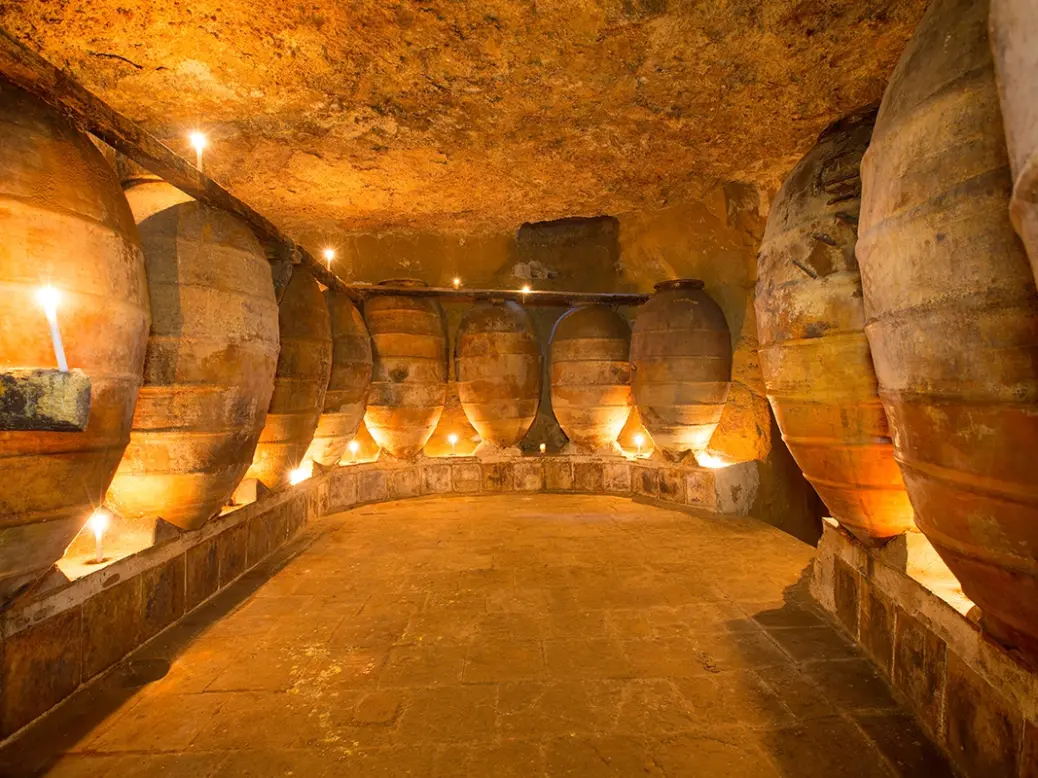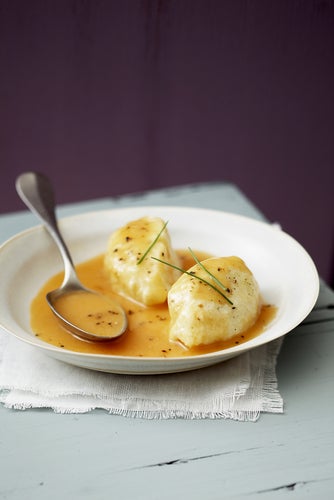
Winemaking has always had a tendency to emphasize the romantic and the historic. I remember a conversation, admittedly some years ago now, with Jean-Marie Ponsot when I was naive enough to ask about changes in winemaking. “Poof,” he said, in some exasperation, “I make wine just like my father did and just like his father did. Nothing has changed.”
While laying claim to tradition is common enough in Europe, this is not a feature of the New World to anything like the same extent and is, of course, the antithesis of the squeaky-clean industrial winemaking of the big brands. Yet tradition infiltrates every pore of the wine industry; just look at wines produced with entirely modern methods but that claim oak influence—albeit due to staves or even oak dust rather than expensive barriques. But should oak barriques be regarded today as the best means of maturing wine because barrels were historically dominant as a means of storage and transport, and oak was the wood most commonly available?
Associating oak with quality is one of the oldest features of winemaking, but of course it did not start like that. Oak barrels were used to store wine because they were a shape that allowed easy transportation and of a size that could be moved by manual labor. It was realized later that oak is not merely useful for transport but actually has an influence on the maturation of the wine, especially when the use of new oak became common. The mantra that new oak is an indication of quality still holds sway—witness the number of overoaked cult wines—but recently there’s been some backing off toward older oak, and even a revisionist move toward using amphorae instead.
Indeed, in terms of laying claim to tradition, amphorae preceded the use of oak by quite a bit. The oldest use of clay vessels is probably the qvevri, buried underground in Georgia about 6,000 years ago. Amphorae were created by the Egyptians and were common in winemaking, as seen in tomb paintings. Barrels probably first came into use for transport during the Roman Empire, after the Romans reached Gaul; by 300 ce they were common, with cooper’s guilds all over Europe. The move to go back toward amphorae, or even qvevri, started among natural-wine makers but has now reached the mainstream; amphorae can even be found in that haven of oak-driven tradition, Bordeaux. Is this anything more than romanticism? (Of course, the oldest form of wine storage may have been animal skins, especially goatskins, which hold up to about a barrel’s worth of wine; but no one seems to be proposing that this should be reintroduced as a means of maturation.)
Going back to the start of the winemaking process, there is no clear evidence as to whether the type of container has any effect on fermentation. (The size and shape may have an effect, especially when punch-down is used for maceration.) The most plausible difference is between stainless steel and concrete or wood, since stainless steel has no inherent insulation properties and requires cooling coils for temperature control, which may result in a more abrupt temperature gradient within the liquid. Some producers believe that stainless steel allows electrostatic interactions to influence the wine, but I’ve never seen any proof of this. Of course, it’s also completely impenetrable to oxygen. Advocates for concrete usually cite its insulating properties; occasionally I’ve heard that it allows oxygen transmission, which does not seem likely to be a significant effect. Wood would be favored by the romantic view, and some producers believe that it leads to a better-integrated wine, but again there is a lack of evidence. Given the turbulence of fermentation, it’s hard to believe that any of these effects make a major difference, which is perhaps why all types of containers are used during fermentation without any particular implication as to quality.
Egg-race challenge
Of course, it’s another matter when we come to aging. The clearest difference is between aging in vat (stainless steel or concrete) and oak, with a whole hierarchy of differences in oak aging depending on whether the winemaking container is large (for example, botti or foudres, up to 50hl or even 100hl) or small (for example, 500-liter tonneaux or 225-liter barriques) and, in the latter case, what proportion of the oak is new. Somewhere in between comes clay, meaning amphorae. There are also experiments with small containers of stainless steel, about the size of barriques. The use by biodynamic producers of concrete eggs, at a size equivalent to a few barriques (usually 6hl or 16hl, so roughly the equivalent of between three and six barriques) has now passed from experiment to the mainstream.
The argument for concrete eggs is that, by mimicking the natural shape of the egg, the container mimics the movement that occurs in the egg, with fluid gently rotating. This is all very well as a romantic notion, but setting out to defy the laws of thermodynamics is rarely a good idea. A living egg has a motive force as it develops; what is the equivalent in a concrete egg? Perhaps there is something to the idea at the point when the container is filled, and there is movement from the filling and possibly even from heat, if the wine has only just completed fermentation. But once the lees have settled and the fluid has reached a final temperature, where is the energy to come from to cause the fluid to move? This would require a source of heat. Maybe if the cellar warms up in the spring? But—oh, dear—isn’t half the point of concrete its wonderful insulating properties? There are some contradictions here that aficionados of maturation in eggs need to resolve.
The focus on concrete eggs reminds me of another egg—the philosophers’ egg. This dates from the search for the philosophers’ stone by alchemists in the 15th and 16th centuries. The philosophers’ stone was supposed to be able to convert base metals (such as lead) into gold or silver. Alchemists agreed that the preparation of the philosophers’ stone involved putting the mixture of components into an ovum philosophicum, a glass vessel with an oval body and long neck. Its name reflected both its shape and its function in “giving birth.” The mixture was sealed into the philosophers’ egg by melting the sides of the neck together; this was called the seal of Hermes—and is the origin of “hermetically sealed.” The sealed flask was then heated in a furnace.
Reports of the successful production of philosophers’ stone were, as Mark Twain might have said, much exaggerated, though it took a couple of centuries before alchemy was finally abandoned. I challenge advocates of using an egg-shaped vessel for maturation to produce concrete evidence that their belief in its ability to support special fluid motion is better founded than the belief in the philosophers’ stone.
Clay pros, cons, and queries
Amphorae at least have the blessing of history, though amphorae today are rather different in character. Ancient amphorae probably allowed a very high passage of oxygen into the container through relatively large pores, so winemaking would have been quite oxidative. Current measurements suggest that Georgian qvevri, for example, may have had an oxygen transmission rate (OTR) about 50 times greater than a modern amphora. Today’s amphorae come in several versions, depending on the way the amphorae are fired. Classic terra-cotta is fired at around 1,800°F (1,000°C) and has a relatively high porosity. Recent developments changing the composition of the clay allow firing at higher temperature, over 2,160°F (1,200°C), which gives amphorae with smaller pores. These have an OTR similar to an oak barrel. Advocates for amphorae argue that this gives the advantage of oak barriques for controlled oxygen exposure, without the disadvantage of adding aromas or flavors. Another variant is grès, produced by including quartz in the firing mixture, which gives lower porosity, possibly as low as between 10 and 20 percent compared to oak. By varying the composition of the material, it’s possible to produce amphorae with a specified range of OTR.
The real question, of course, is what effect this has on the wine. I have not been able to make enough pair-wise comparisons of wines aged in barriques versus the same wines aged in amphorae to form any firm conclusions, but it seems on the basis of limited experience that amphorae tend to produce a purer impression of fruits, without the quasi-aggressive quality that can come, for example, from stainless steel. Amphorae also give a rounder impression compared to concrete (even concrete eggs). But there is perhaps less breadth, less variety of flavor, than a wine aged in barriques. This yin and yang could change significantly as the wines age, but the use of amphorae remains too recent—at least in the modern incarnation—to get any bead on this. Ultimately, I would say that using amphorae is an interesting experiment with some potential but that it’s too early to form a verdict.






